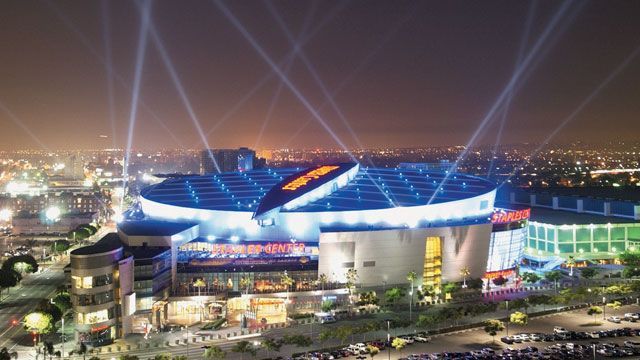Rootmetrics: T-Mobile’s network needs improvement at leading NBA venues
Picture the scene: You’re settling down in your seat at a leading NBA game and want to snap and send a picture of your Zach LaVine slam-dunking from a mile away. Except, you can’t get Instagram to upload your picture because your network is completely congested by the thousands of other sports fans doing exactly the same thing. If this type of scenario is your worst nightmare, and cell coverage at your NBA arenas is of upmost importance to you, there’s a report to help you out.
RootMetrics – the well-known network testing company – recently completed its survey of four NBA arenas. They compared Verizon, AT&T, Sprint and T-Mobile networks for speed and – more importantly in these locations – reliability. The four stadia were: BMO Harris Bradley Center (Milwaukee Bucks), United Center (Chicago Bulls), Staples Center (LA Lakers) and American Airlines Arena (Miami Heat). And while T-Mobile didn’t score terribly in all the arenas, it did show that it has some way to improve so that its customer can stay connected while watching their favorite basketball players strut their stuff on court.
You can read the full report here, but to make it simple, I’ve broken it down by arena:
American Airlines Arena – Miami Heat – 19,735 fans in attendance
– T-Mobile score (/100): 89.5
– Better than: AT&T (84.2) and Sprint (65.4)
– Worse than: Verizon (98.4)
BMO Harris Bradley Center – Milwaukee Bucks – 13,406 fans in attendance
– T-Mobile score (/100): 68.6
– Better than: No one
– Worse than: Verizon (95.9), AT&T (83.6) and Sprint (81.1)
Staples Center – Los Angeles Lakers – 18,997 fans in attendance
– T-Mobile score (/100): 37.2
– Better than: No one
– Worse than: Verizon (69.9), Sprint (60.4) and AT&T (48.5)
United Center – Chicago Bulls – 21,302 fans in attendance
– T-Mobile score (/100): 61.0
– Better than: No one
– Worse than: Verizon (95.5), Sprint (76.6) and AT&T (67.2)
Of the four arenas tested, T-Mobile finished fourth in three of them when factoring network speeds and reliability. In the United Center, during the game, T-Mobile fans would have to wait an entire minute to email a photo. It would have been even worse for those watching the Chicago Bulls during their game. With an average speed of just 0.2Mbps at the Staples Center, T-Mobile’s network would take four minutes to send a picture.
Of course, network performance and reliability at sports arenas isn’t the be-all and end-all. It’s more important that T-Mo continues to build out its 700MHz network and continues expanding its LTE footprint across the country than it is to turn its attention to sports venues. For me, whenever I attend sports events, I take it for granted that coverage is going to be terrible. I use it as an excuse to unplug and just live in the moment for a couple of hours or so before normal life resumes.
What about you? Do you get frustrated by network congestion and slow speeds at sports games? Or do you accept it as just what happens at packed arenas?
Source: SportTechie

